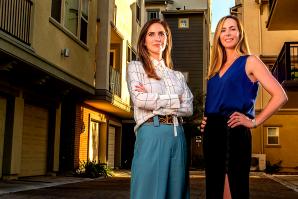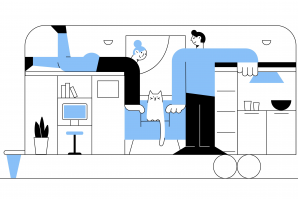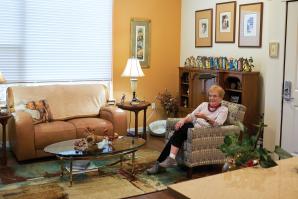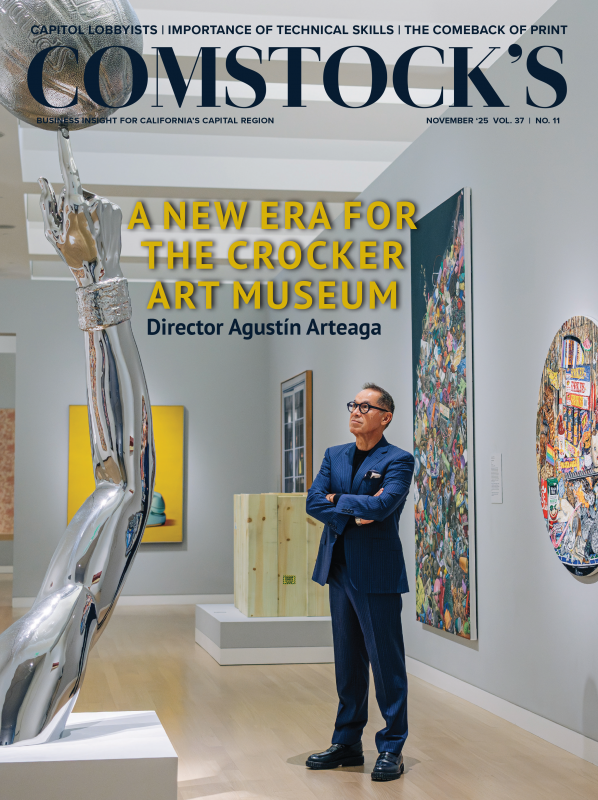Denmark has built 7,000 senior cohousing homes so far, and they’re preparing to build many thousands more. It’s time to get a senior cohousing built in Sacramento — it’s doable, it’s necessary, and it’s a heck of a lot more fun than being alone in your home.
Currently, it’s one of the easiest housing products to build, get approvals for and get financed, in part because the future residents and supporters show up en masse to public hearings, and they bring the first 20 percent of the total investment to the table. And for seniors considering and reconsidering their housing options for their second half, now is probably a good time.
Seniors now have the opportunity to live in a real village where folks know, care about and support each other. Not to mention entertain each other and live independently by virtue of living in a high-functioning neighborhood. In a national poll on healthy aging conducted by the University of Michigan, 46 percent of seniors reported feeling isolated post pandemic. Forty-two percent reported feeling a lack of companionship. Lonely is no way to go.
Related: Neighborly by Design: Cohousing communities are growing in popularity across the Capital Region
Plus, there is nothing manufactured or cookie cutter about cohousing — the future residents plan it themselves.
Susan moved into cohousing at 63. After living in Hawaii for many years, she came to decide that healthy interpersonal relationships were what she was looking for most, not just a view. Cohousing communities are deliberately and thoughtfully designed cottages situated in a more or less village-like arrangement, with extensive neighborhood facilities and private homes. The cohousing projects are often started by a group of friends that want to live closer together.
Cohousing is typically multigenerational, and more and more are appreciating senior cohousing. Carolyn and Jack thought they would live out their lives in their oversized house. They moved into cohousing 10 years ago and have never looked back. They love having dinner and sharing experiences with friends they can just walk to visit. Cars can live at the end of the periphery of the site instead of next to the houses. They’re not going to get lonely out there.
Related: The New Age of Aging: Developers in the Capital Region are building new models of senior housing — in preparation for the ‘silver tsunami’ to come
Most people prefer community, friends and family when they can get it. But America has become suburban and estranged. The easiest community that I ever designed was in Emeryville. Almost everyone there had grown up in small towns or hamlets and understood the advantages of knowing and cooperating with neighbors — how it made life more economical, more practical, more convenient, safer, healthier and more fun. Seniors often tell me that living in senior cohousing means living independently with a community backup, not an institution, and not alone.
People tell me that they live in cohousing because, statistically, they will be able to stay in their house another 10 years, partially because they will live about 10 years longer, according to a Psychology Today study. It’s no panacea or utopia, but it is a smarter option.
Cohousing is having as much privacy as you want and as much community as you want. As an architect who has designed more than 55 cohousing communities, I have yet to work with a group who didn’t see this as a major goal. And we find that once Americans discover choice, they prefer it.
Related: Free Parking? How Sacramento is prioritizing housing for people over housing for cars
In Copenhagen (pop. 667,000), the real estate pension company Realdania conducted a survey of 80,000 seniors over a three-year period. They asked them which housing type they would prefer to grow old in: a single-family house, condominium, apartment, assisted care facility or senior cohousing. The majority of the respondents answered senior cohousing. And according to one study in Denmark, seniors that live in cohousing cost the government one-seventh in practical assistance.
So the city is making the rezoning process of Copenhagen a priority. How to fit senior cohousing into existing buildings and how to build new senior cohousing is the priority now. I lived in Denmark near Copenhagen for two years, so this is no surprise. Seniors in that country focus on how to grow old successfully, how to be with friends and the importance of a high-functioning neighborhood. They don’t leave it up to chance; they don’t roll the dice.
Nationwide in Denmark, seniors often do a seminar called “Study Group One: Aging Successfully.” They learn how to be 1. conscious of the issues of growing older (financial, psychological, etc.); 2. out of denial (“I’m getting older; I’m lucky I’m continuing to get older”); and 3. proactive (what to do now?). Don’t be the frog in the proverbial warming beaker — jump before it gets too hot!
Related: When the Sun Sets on the Golden Years: The hardship and high cost of caring for a loved one in decline
We at The Cohousing Company in Nevada City have translated the Danish SG1 workbooks and have been giving yearly seminars in the U.S. since 2000. We start this year on Oct. 1 and go for 10 weeks, with three hours each week. Whenever I get together with a group of seniors to help design a functioning and connected neighborhood, the ones that have taken Study Group One are the ones that do it the easiest and at the least expense. They know what they are doing and why from the beginning — they have both feet in the future. They have learned not to wait until it’s too late, to not procrastinate when it comes to your quality of life in your waning years.
Studies on Blue Zones (regions where people live the longest) often reach the same conclusions when it comes to quality of life for seniors: eat right, stay active and stay connected. One and two are very connected to three. If you need to join this year’s Study Group One workshop late, that’s fine, we’ll make sure you can catch up. More information and registration can be found at cohousingco.com/events. The required reading for SG1 is “The Senior Cohousing Handbook: A Community Approach to Independent Living.”
Be prepared to be proud of yourself for imagining and understanding the challenges as well as the solutions.
Charles Durrett, principal architect at The Cohousing Company, coined the term “cohousing” in 1985 after studying Denmark’s bofællesskaber model and went on to bring it to North America through his landmark book “Cohousing: A Contemporary Approach to Housing Ourselves,” now in its third edition. With 16 books to his name, including “Neuro-Inclusive Community Design,” he has designed more than 55 communities for seniors, families and neurodiverse individuals. For four decades, Charles has shown through his architectural design, teaching, and public speaking that housing should foster belonging, sustainability and true human connection.
–
Stay up to date on business in the Capital Region: Subscribe to the Comstock’s newsletter today.
Recommended For You

Neighborly by Design
Cohousing communities are growing in popularity across the Capital Region
Cohousing is a noteworthy trend as homebuyers seek options that
invest in sustainability and personal
connections.

Brand Builders
Cousins Katherine Bardis-Miry and Rachel Bardis continue the family legacy of building homes with their own approach
A latex unicorn mask hangs on the back wall near the window of Katherine Bardis-Miry and Rachel Bardis’ shared office.
“We’re kind of weird,” Katherine laughs.

Book Review: ‘Housing for Humans’
An architect advocates for creative, simple solutions to the affordable housing crisis
Washington, D.C., based architect Ileana Schinder is a relentless advocate for residential and urban design solutions that can offer pathways for addressing today’s pernicious affordable housing crisis. She highlights these in her book “Housing for Humans: A Book to Imagine, Create and Design a New Housing Model in America.”

Free Parking?
How Sacramento is prioritizing housing for people over housing for cars
After decades in thrall to the car, local developers and legislators are beginning to rethink parking and the role it should play in the city.

The New Age of Aging
Developers in the Capital Region are building new models of senior housing — in preparation for the ‘silver tsunami’ to come
As aging baby boomers approach their golden years, new senior living projects are springing up to accommodate to increased demand and offering a new take on “aging with grace.”




